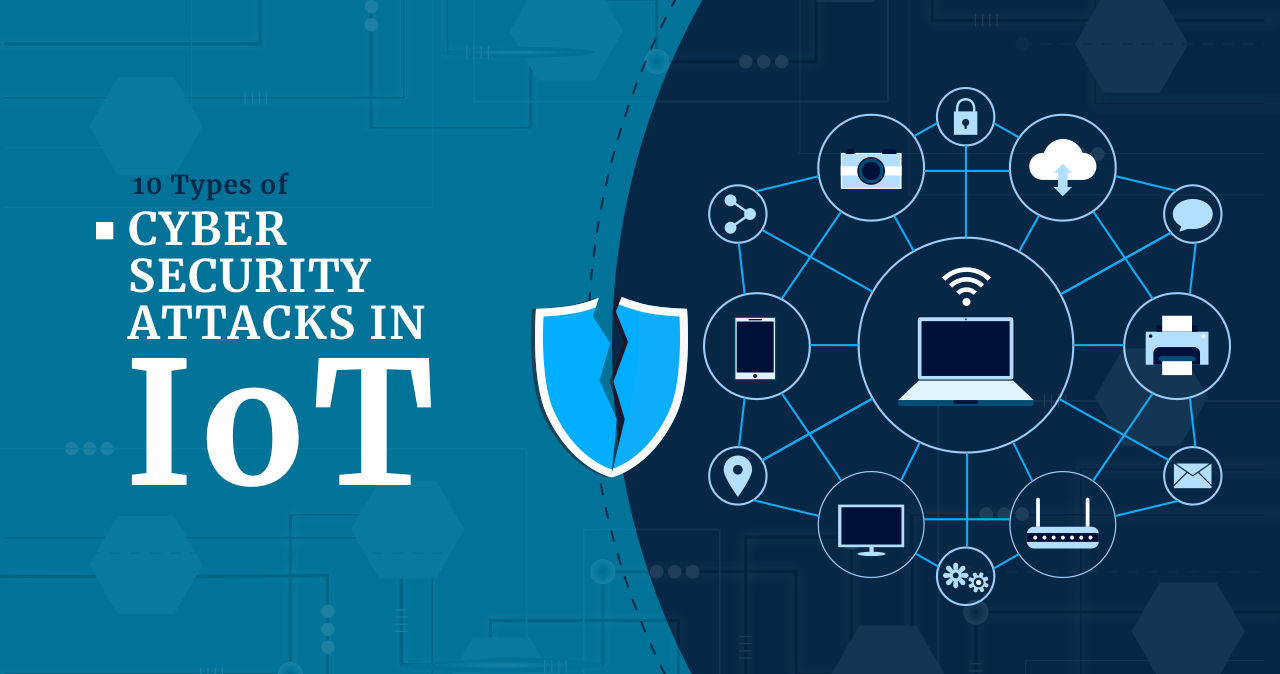In a world where information progress is rapidly developing, it is impossible to do without IoT. You probably don’t know what you’re talking about, so let’s take a quick look at this acronym. IoT(Internet of things) – is a large number of Internet things that interact with each other. In other words, it’s data transfer between different devices.
This feature allows organizations to improve performance and even serve customers. Organizations that want to protect the transmission of their data and the device through which it happens must understand IoT cybersecurity, as most attacks are aimed at that. According to the calculations of attacks aimed at IoT devices, statistics are growing significantly every year and should consider this situation and how to counteract it. In this article, we will analyze the smallest but most common number of attacks that can cause significant damage to devices and users’ data.
Types of IoT Cyber Security Attacks
1. Physical Attacks
These attacks are propagated intentionally by attackers to discover, modify, steal, destroy, and gain unauthorized access to infrastructure, physical assets, firewall, or equipment. The most common physical attacks can be considered:
- Zero-day attacks: This sub-type of attack targets security vulnerabilities. the vulnerability that the attacker is looking for should be made public, after which the elimination of an attack on such an unknown vulnerability is almost impossible. Therefore, zero-day is considered that the consequences of this attack are sad.
- Eavesdropping attacks: The intruders here are aimed at stealing confidential data through an attack on communication channels that are used only by certain individuals and companies for the exchange of information.
- Data Injection attacks: These attacks are embedded through commands and malicious codes of control systems that are poorly protected.
- Replay attacks: In this case, the attack occurs through an authenticated data packet modified by malicious instructions. Packets are sent to electronic equipment that does not know what is in those packets, namely, a disguised malicious packet under a completely legitimate data packet.
2. Encryption Attacks
An attacker can intercept data, modify, install their algorithms and gain control over your device if the user’s IoT device is not encrypted. In this regard, encryption should not be forgotten, as it is necessary in the IoT environment.
3. DdoS (Denial of Service)
DdoS attacks target system resources, aimed at distributing malware, through the host of the machine, and also at getting a denial of service. In another case, DdoS can shut down the system, that is, intercept a session in order to implement a different type of attack into it. Types of DdoS:
- TCP SYN flood attack: A buffer space is used to propagate this type of attack, through which a large number of connection requests are hacked , half of which creates a target system queue, and because of it a failure in the system.
- Teardrop attack: The failure of this attack is due to such a chain of actions: when the attack starts, there is an offset of Internet protocol fragmentation, the system tries to resist it, but cannot.
- Smurf attack: This type of attack uses IP spoofing and ICMP.
- Ping of death attack: Here the attacker uses IP-packages “ping”. The attacker fragments the IP packet and the target system is unable to assemble the packets because the buffer is full and it fails.
4. Firmware Hijacking
This attack involves the attacker capturing the device, after which the installation of malware on the user’s device. To avoid this, you should always check the firmware updates of IoT to avoid this risk. Firmware is the core, the core of your device, which is common software. Functions can be considered data exchange with software installed on your computer.
5. Botnets
A botnet attack starts remotely with a large number of bots on the IoT device. This happens remotely and under the control of the intruder, who is focused on either disabling the user’s device or transferring or selling the user’s data to a dark network. This attack is a big problem today, as it affects a huge number of devices around the world.
6. Man-in-the-Middle
Here the attacker works between, in the middle. Now we’ll sort out what it means. Now, a hacker intercepts communications between two sources, thereby deceiving one of these recipients to receive a legitimate message. Two users are deceived by the attacker and begin to act blindly, not realizing that the messages that come to them are fake. These messages might look like this: an email indicates that something has happened to your bank account, which is why you should log in to the system to fix the problem, and invites you to go to a fake site where you are already waiting for an attacker to collect your credentials.
7. Ransomware
Ransomware attack is a type of malware that targets you and your data. This happens by blocking your data through encryption. For the user to get the decryption key, the user is asked to pay it, and often not a small amount.
8. Eavesdropping
This attack targets sensitive data by intercepting network traffic and weakening the connection between the server and IoT devices. Then through data interception, digital listening, or analog communication, eavesdropping occurs.
9. Privilege Escalation
An attacker attempts to access resources through IoT device vulnerabilities, often protected by a user profile or an application. But bypassing all the security systems, the hacker is trying to spread malware Po or steal confidential data.
10. Brute Force Password Attack
This type of attack is a rough way to steal confidential user data. This attack occurs through software that can generate many password combinations that the attacker distributes to a certain number of users. Next, all simple accounts protected by a weak password fall under this attack. This allows the attacker to take confidential data, distribute malware, and create everything he needs.




